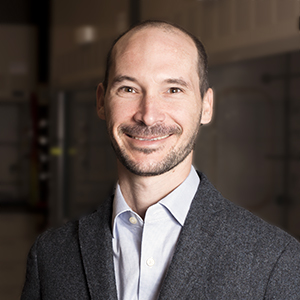Michael Grünwald, Ryan Looper and Rodrigo Noriega, of the University of Utah Department of Chemistry, received a $1 million grant from the W.M. Keck Foundation funding studies of currently unpredictable aspects of the process of crystallization. Accurate models of how molecules come together to form solid structures will help save time in developing new pharmaceuticals and industrial materials, since researchers will be able to bypass lengthy and expensive screening processes.

Michael Grünwald.
“Developing a new drug that is effective, safe and affordable is an enormously expensive and time-consuming process”, says Michael Grünwald. “With our research on how drug molecules crystallize, we hope to really speed things up, so that new antibiotics or antivirals drugs can reach patients more quickly and cheaply.”
Predicting how molecules will form crystals is, in the researchers’ words, “extraordinarily difficult.” A crystal is an arrangement of atoms or molecules in a repeating pattern, held together by attractive forces between them. While these atoms or molecules, like Legos, could possibly be arranged in many different ways, the principles of thermodynamics suggest that they will simply arrange themselves in the crystalline structure that maximizes their favorable interactions, just like magnets arrange themselves in a pattern dictated by the magnetic forces between them. This principle works very well for many simple crystalline substances, like table salt or gold, which only have one or two types of atoms and always form the same crystal structure.
Unfortunately, it often doesn’t work that way for organic drug molecules. These molecules are made up of tens or hundreds of atoms and can produce a variety of crystal structures. Often, when developing a new drug, only one of these structures has the “Goldilocks” properties of being stable enough that the drug doesn’t degrade but unstable enough that it can dissolve in the human body. Identifying which of these different crystal structures, or polymorphs, is the right one and how to reproducibly make the right polymorph requires dedicated teams of researchers, significant experimentation and time—ultimately delaying the delivery of life-saving medicines to the patient.

Rodrigo Noriega.
Grünwald, Looper and Noriega, along with graduate students and postdoctoral researchers, have an idea that may help make the process of predicting crystal structures simpler. Current models of crystal formation assume that crystals are built one molecule at a time. But the U team proposes that they’re likely built in chunks of two, three or more molecules, called oligomers, and that this process, rather than leading to the crystal structure favored by thermodynamics, instead picks crystallization pathways that are favored kinetically. Favoring one process over another kinetically simply means picking the faster option---like choosing restaurant X over Y because, even though you like Y's food better, the wait is much shorter at X.
The team brings together a diverse set of researchers that study chemistry in very different ways: Grünwald is a chemical theorist who develops computer simulations to describe chemical processes, Noriega is a spectroscopist who studies the behavior of molecules in solution and Looper is a medicinal chemist who prepares and studies new drug substances. “Combining our expertise will allow us to build new models, compare them to experiments and extract insights to design new chemical systems”, says Noriega. As a group they aim to create a set of tools to help other chemists select the crystal structures they want and produce them quickly and purely.

Ryan Looper.
“Crystal structure prediction of new drug molecules has the potential to really impact people’s well-being by expediting the development process and lowering the cost,” Looper says. “I am excited about our ideas to improve the drug development process, but many questions remain unanswered. The idea that thermodynamics might not accurately predict crystallization is quite controversial in the field. The Keck foundation’s support of our research is essential to provide new evidence to convince scientists to think a different way.”
About the W. M. Keck Foundation
The W. M. Keck Foundation was established in 1954 in Los Angeles by William Myron Keck, founder of The Superior Oil Company. One of the nation’s largest philanthropic organizations, the W. M. Keck Foundation supports outstanding science, engineering and medical research. The Foundation also supports undergraduate education and maintains a program within Southern California to support arts and culture, education, health and community service projects.
